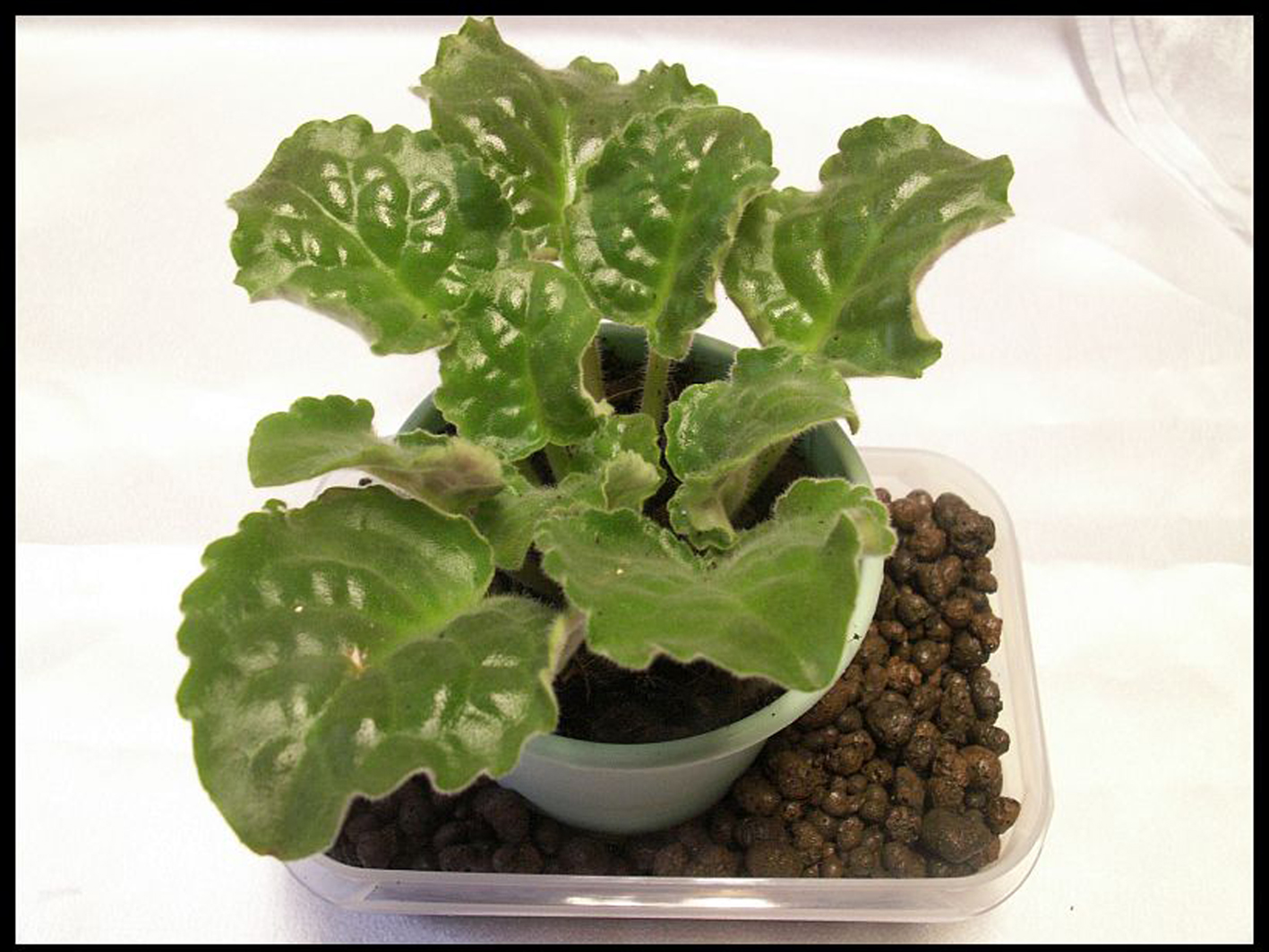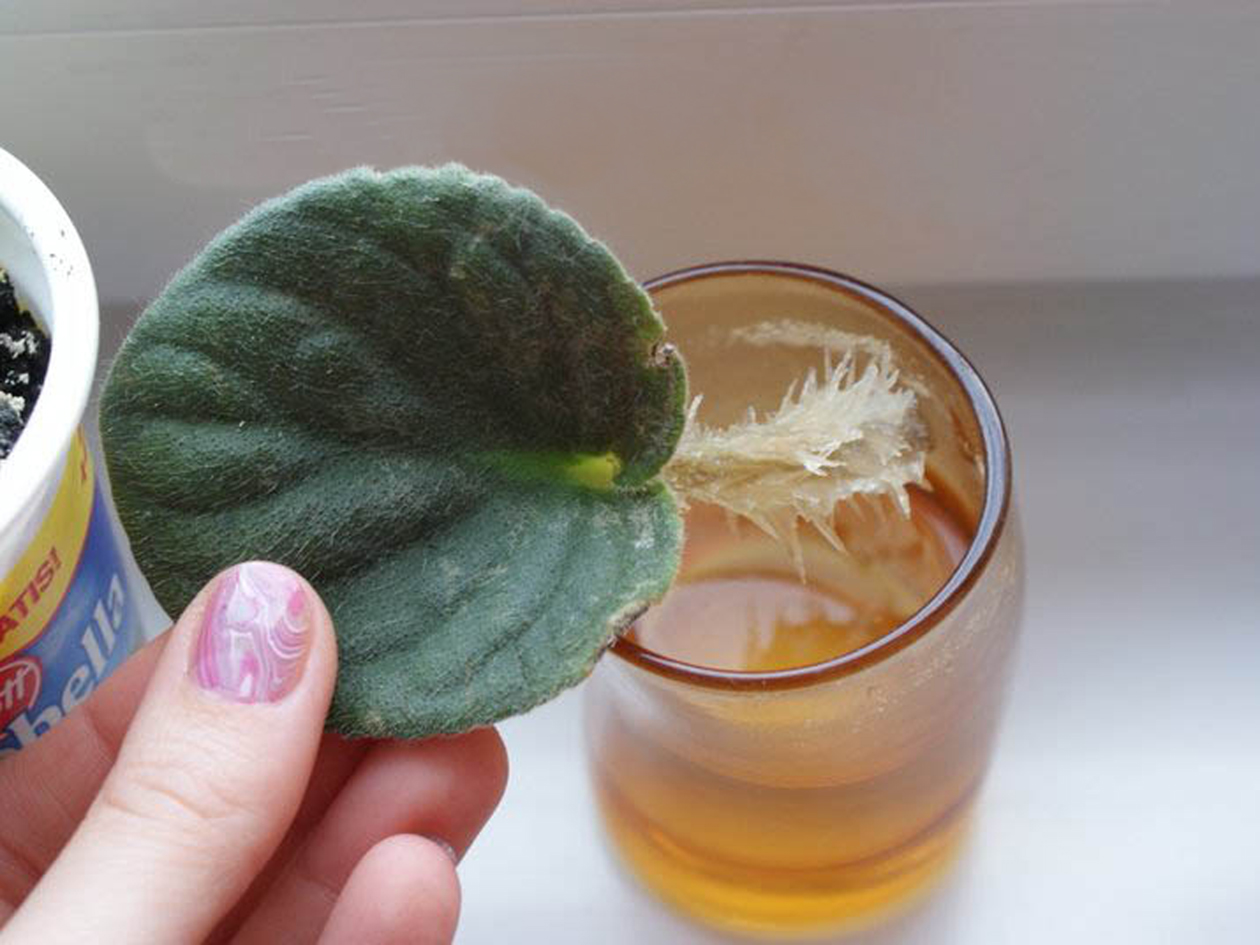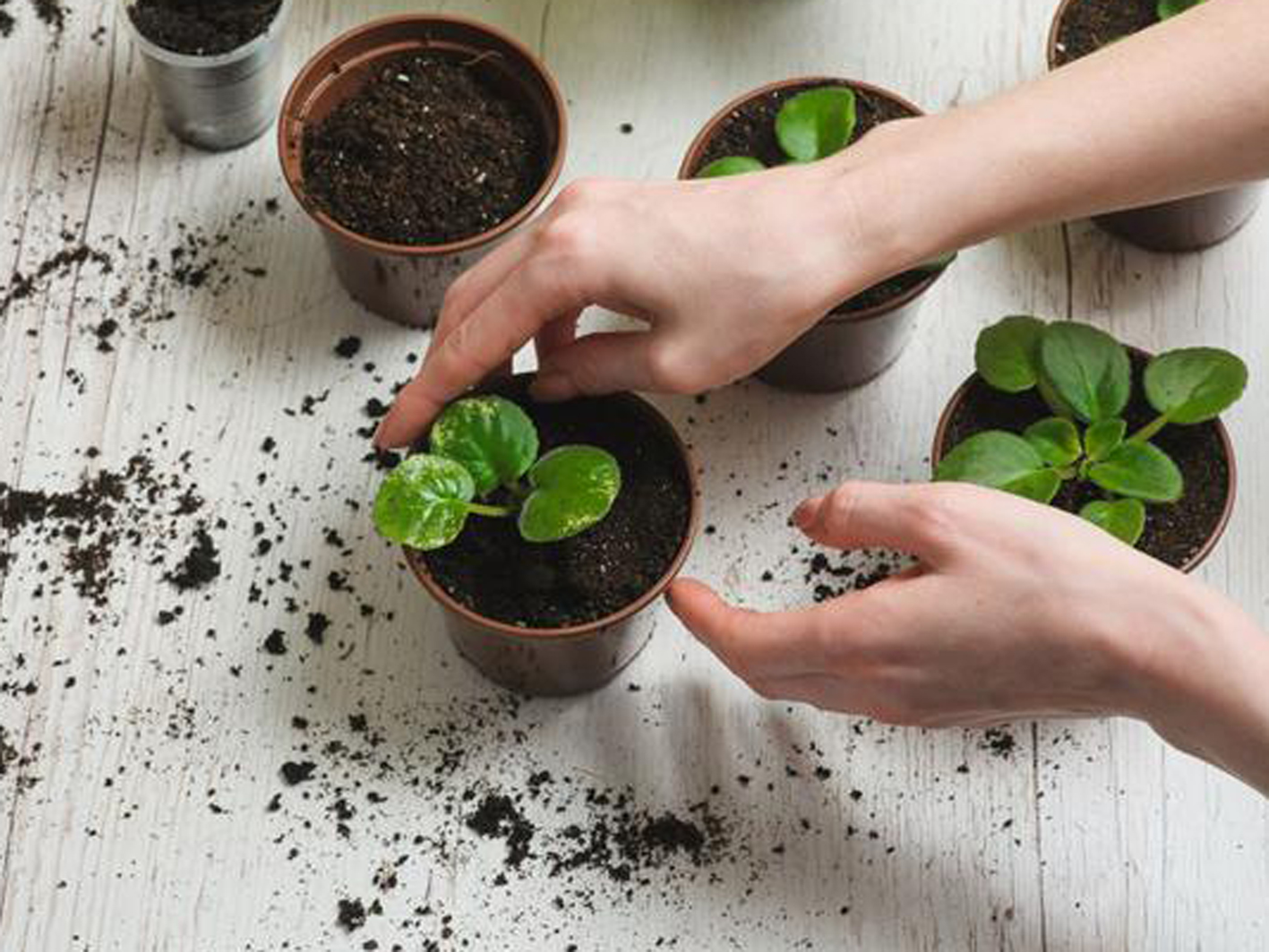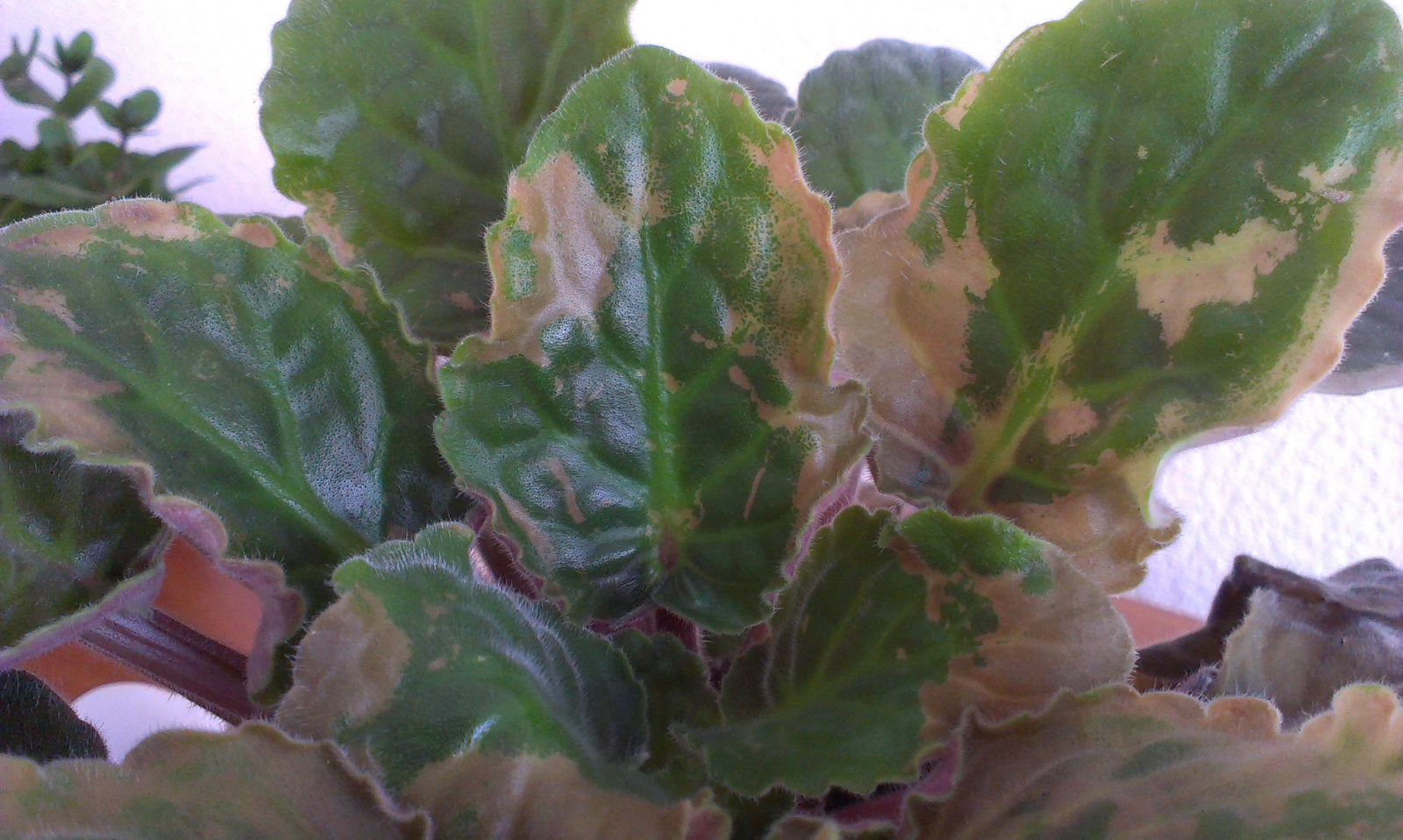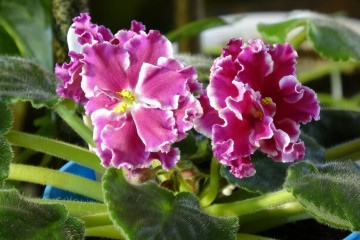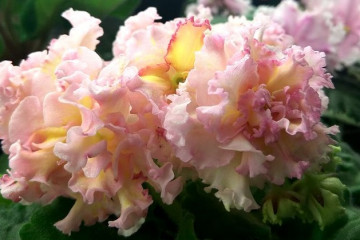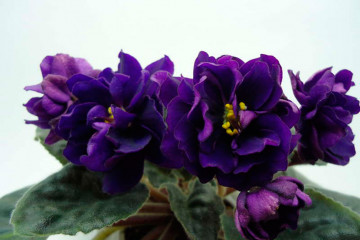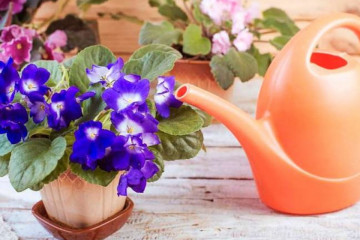Violet Humako inches - plant features
Content:
Saintpaulia is one of the best flowering plants to grow in a room. Many people are more familiar with another name - violet. Currently, there are more than a thousand varieties of this flower. Species with unusually colored large flowers are especially decorative. Saintpaulia Humako inches stands out from this group due to the original color and shape of the inflorescences. In addition, with proper care and favorable conditions, it blooms profusely for 6-8 months.
What does Saintpaulia Humako look like inches
Before deciding to purchase this variety of Saintpaulia and start growing it, it does not hurt to find out the history of the origin of this flower and the features of its appearance.
Description
This species is distinguished by the large size of both leaves and flowers. The leaves have a rich green color and pubescence, characteristic of all representatives of this species.
The flowers of this Saintpaulia are especially decorative. They have a rich inner blue color, which smoothly turns into a snow-white edge. The flowers are the same size, the diameter of each is 6-8 cm. During the flowering of the leaves, it is practically invisible under the cap of the lush inflorescences.
Species affiliation
Saintpaulia belongs to the Gesneriev family. The flower was first discovered in the Uzambara mountains of East Africa, for this very reason it is called the Uzambara violet.
In the conditions of natural growth, the plant is evergreen. The height of the rosette can reach 30-40 cm, which significantly exceeds the size of indoor specimens.
Origin story
The name Saintpaulia was given in honor of Saint-Paul Hiller, the commandant of the Uzambara district, who discovered them in 1893. It was he who first discovered this plant and collected the seeds. Subsequently, the seed was transferred to the botanist from Germany Herman Wendland, and he already gave the flower a name and identified it as belonging to the Gesneriev family.
Such highly decorative varieties as Humako flame and Humako violet are also the merit of this company. It is worth mentioning the Humako Isabella variety, the flowers of which are simply incredible in color.
Features of home care
The main conditions necessary for the normal growth and development of a plant are light, air, heat, water and nutrients in the soil. For Saintpaulia, it is especially important to adhere to the technology and irrigation schedule, as well as the choice of the optimal place for its placement.
The main list of requirements and conditions for growing this plant includes several items.
| Temperature regime | The optimum temperature for growth is 20-23 degrees. They can tolerate a slight decrease of 3-4 degrees. |
| Lighting | The lighting must be intense, daylight hours are long, but direct rays should be avoided. With a lack of light, Saintpaulias may not bloom, and the leaves may stretch to the top. |
| Watering | Watering should be carried out in a sump, but the water in it should not stagnate. The difference between the temperature of water for irrigation and air by more than 5 degrees is unacceptable.Therefore, water for irrigation should only be used at room temperature. |
| Spraying | Saintpaulia leaves are not washed or sprayed. The hairs on the surface of the leaves have the ability to retain moisture - this leads to the development of rot. |
| Humidity | It has no special requirements for humidity, but it will be useful to place the plants near vessels with water or trays with wet expanded clay. |
| Priming | For planting, use a ready-made soil mixture for uzambar violets or independently mix 4 parts of deciduous soil and one part of peat and sand. |
| Top dressing | It is recommended to apply complex mineral fertilizing at intervals of 12-15 days in the spring-summer period. It is permissible to apply cow dung diluted 1 in 10 with water, but care should be taken to avoid getting fertilizer on the leaves. |
A very important point in the cultivation of Saintpaulia Humako inches is the choice of where to place it. Experienced gardeners know that it is the right sill that plays a decisive role in the full development of this plant.
How and when it blooms
The Uzambara violet Humako inches has a very long flowering period. As a rule, it starts in March and lasts until the end of November. On rare occasions, blooming specimens can be seen even in winter.
An interesting fact is that there are two types of this plant, new and old, which differ in the shape of the petals on the flowers. The true representative of the variety is the saintpaulia with large simple petals, and the presence of slight waviness along the edge is attributed to the signs of an experimental subspecies. Both varieties can be found not only in private collections of lovers of uzambar violets, but also in free sale.
Features of care during flowering
The most anticipated moment when growing saintpaulias is the flowering period. In order to prolong it and provide the flower at this time with optimal conditions, it is worth considering several important points:
- you can not rearrange the pot with the plant to another place;
- watering should be done especially carefully, avoiding moisture on the flowers;
- it is necessary to regularly make mineral dressings with a frequency of 10-14 days;
- wilted flowers must be carefully removed.
Another point concerns young plants. Usually, the flowering of the uzambara violet occurs at the age of 8 months. If the buds started to form earlier, it is better to remove them. This will allow the young plant to fully build up its vegetative mass and develop the root system.
Reproduction
Saintpaulia is propagated most often by leaf cuttings. You can also use dividing the bush into rosettes and growing from seeds. It is worth noting that reproduction by seeds is the most difficult, since it is a rather long and painstaking process.
Vegetative propagation
It is quite easy to get a new copy of Humako violet by rooting leafy cuttings. The whole process consists of several stages:
- In an adult plant, several well-developed, not very young leaves are cut off with a sharp knife or blade, leaving petioles 3-4 cm long.
- Settled water is poured into a glass container and the stalk is fixed in it so that only the lower part of the petiole is in the water, and the leaf is above the container.
- After 2-3 weeks, roots will begin to appear.
- When they reach 2-3 cm, the leaves are transplanted into a container filled with a mixture of peat and sand in a ratio of 2/1, deepening the cuttings into the ground by no more than 2 cm. Then a shelter is placed.
- The container is placed in a well-lit place, shading the seedlings from direct sunlight, maintaining a constant soil moisture and a temperature of 21-24 degrees.
- When young leaves appear and reach a length of 2-3 cm, the seedlings are removed from the ground and planted in separate pots.
Propagation of Saintpaulias by leaf cuttings is the most optimal way. The survival rate of young plants is very high and after 8-10 months flowering can be expected.
Transplant after purchase and during reproduction
One of the main conditions for the full growth of Saintpaulias and their annual flowering is the correct planting of plants. It implies the fulfillment of certain conditions:
- the drainage layer should occupy at least a quarter of the capacity;
- it is better to use the soil ready for Saintpaulias, or mix garden soil, peat and sand in a ratio of 2/1/1, respectively;
- the surface of the soil after planting can be sprinkled with wood ash to disinfect and prevent rotting of the lower part of the leaves.
By following these simple rules, it is quite possible to count on the rapid rooting of the flower and its active growth in the future.
Possible growing problems
As a rule, subject to the rules for caring for uzambar violets, there are no problems with their cultivation. Deterioration of leaf condition, general appearance or lack of flowering can be caused by improper care. Sometimes problems arise from pests and diseases.
Changing the state of leaves
The most common problem for Saintpaulias is leaf deterioration. There may be several reasons for this:
- too close placement of pots (leaves of neighboring flowers are in contact);
- excessive watering;
- improper fit;
- damage by pests;
- root system disease;
- lack of light.
All these factors can cause the appearance of spots on the leaves or the development of cuttings rot.
Pests and diseases
All Saintpaulias varieties, and especially such varietal ones as Humako inches, are susceptible to the following diseases: fusarium, late blight, powdery mildew, various rot. The cause of the disease can be improper care, or infection from another neighboring plant. Cyclamen mites and aphids are also dangerous.
At the first signs of the disease, measures should be taken and the necessary treatment carried out. It is also necessary to isolate the diseased flower from other plants until complete recovery. In particularly severe cases, it is recommended to transplant into another pot with a complete replacement of the soil.
Systemic insecticides are used against pests, which can be easily found in a flower shop.
Improper care
Growing Saintpaulias requires strict adherence to the rules for the care and maintenance of these flowers. They are very sensitive to temperature changes, drafts, and non-compliance with the irrigation schedule.
Any deviation from the flower care program will lead not only to a deterioration in its appearance and lack of flowering, but also to the death of the plant.
Saintpaulia, in common people a violet, Humako inches is an excellent representative of the Gesneriev family. This flower is quite unpretentious. Following simple care rules and providing optimal conditions for keeping, you can admire the flowering of this beautiful Saintpaulia for as many as 8 months a year.

